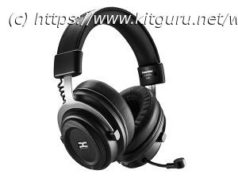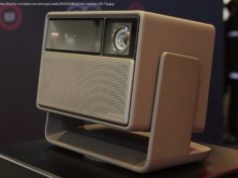After Huawei with the P20 Pro, OPPO is only the second manufacturer to offer a triple-camera smartphone.
After Huawei with the P20 Pro, OPPO is only the second manufacturer to offer a triple-camera smartphone.
Nicely timed to coincide with the launch of the Nikon Z series cameras, Delkin has announced its own line of premium XQD cards that come with a 48 hour replacement service. The new cards run with write speeds of up to 400MB/s, in line with units sold by Sony and Nikon.
Meike has launched a new 25mm T2.2 cine lens for Micro Four Third (MFT) camera systems.
Nikon is getting into the XQD card business. Its new cards come in 64GB and 120GB versions and boast a maximum read speed of 440MB/s and a maximum write speed of 400MB/s.
Most DPReview staff members were lucky enough to get their hands on a Nikon Z 7 ahead of launch, so we’ve had time to form some initial impressions. Here’s what we think of the system as it stands now – and where we would like to see Nikon take it in the next couple of years.
Nikon’s new Z 7 mirrorless camera promises to be useful for video work as well as still photography, and includes features such as 4:2:2 10-bit video over HDMI, usable autofocus in video, and improved video processing. We’ve put together a quick sample reel recorded at Nikon’s launch event in New York.
DJI has announced two new additions to its Mavic series of portable drones, in the process addressing two of the most frequent requests from its customers. The Mavic 2 Pro brings a larger 1-inch type sensor to the Mavic line, while the Mavic 2 Zoom includes an optical zoom lens.
A Russian website has published a full hands-on review of a Google Pixel 3 pre-production unit.
The higher resolution Z 7 might be getting most of the attention, but Nikon’s new Z 6 also has a lot going for it. We’re at the launch of the Z system in Tokyo, where we took a closer look at the Z 6 and three forthcoming S-line lenses.
Nikon has laid out its ambitious plans for the next three years of Z-mount lenses. The most eye-catching is a 58mm F0.95 ‘Noct’ lens and, naturally, standard focal lengths such as an 85mm F1.8,24-70mm F2.8 and 70-200mm F2.8 will be appearing in due course, as well.
After years of speculation and a month of teasers, Nikon has lifted the curtain on its new Z-series full-frame mirrorless system. The flasgship Z 7 has a 45.7MP camera with built-in 5-axis image stabilization and a hybrid AF system with 493 phase-detect points.
The Nikon Z 6 carries over many of the features from the Z 7, from its body design and EVF to many of its video specs, but uses a lower resolution sensor with fewer PDAF points. Since it’s $600 cheaper, it should be accessible to a larger number of photographers.
You can’t launch a new camera system without lenses, and Nikon has three Nikkor Z-mount lenses available at and slightly after the launch of the Z 7 and Z 6. They include a 24-70 F4 S, 50mm F1.8 S and 35mm F1.8 S.
Nikon’s new Z-mount marks a major departure for the company, which (barring the short-lived 1-Series) for almost 60 years has relied on the 1950s-era F-mount for its interchangeable lens cameras. In this article we go hands-on with the first three ‘Z’ lenses: the 24-70 F4,35mm F1.8 and 50mm F1.8.
Nikon tells us it put a lot of thought into creating a consistent user experience between its new mirrorless cameras and its F-mount DSLRs. In this short video, we take a look at what the company got right – and where we think it could do better.
Nikon’s Z 7 is the first camera to use the all-new Z-mount, the company’s first new full-frame mount since 1959. We’ve put together our first impressions based on quality shooting time with a pre-production camera – check out what we’ve found.
The Nikon Z 7 is here and we’ve had the chance to shoot with a pre-production model here in Seattle. Take a look at our first sample images.
With Nikon’s entry into the full-frame mirrorless game, there’s an awful lot to take in: a new mount, new lenses, new features and more. Get caught up quick with everything you need to know about the new, high-resolution Nikon Z 7 right here.
The new Z-mount may be the big story for Nikon’s new Z 6 and Z 7 cameras, but there’s over 100 million F-mount Nikkor lenses floating around the world. Nikon’s FTZ Adapter gives those old lenses a new lease on life, and we’ve had the chance to give it a go and see how it performs.
Join us behind the scenes for this special episode of DPReview TV as we go hands-on with the new Nikon Z 7 mirrorless camera. After a couple days of intense shooting, we’re ready to share our first impressions of this exciting new product.
Nikon will offer an FTZ adapter, allowing full compatibility with over 90 AF-S lenses and functionality with many more Nikkor F lenses. The adapter will sell for $250 starting September 27th; when purchased with a Z 7 or Z 6 before the end of the year, Nikon will offer $100 discount.
The previously-announced 500mm F5.6E uses a Phase Fresnel design for a lighter and smaller body, and will arrive in September for $3600.
Nikon will sell an optional Dot Sight accessory to help telephoto photographers better track moving subjects.
A farm near Rochester, New York is celebrating Kodak’s 130th anniversary with a unique tribute: a camera corn maze, complete with a flash and a strip of film.
Adobe has updated Adobe Lightroom CC to version 1.5, Adobe Lightroom Classic CC to version 7.5 and Adobe Camera Raw to version 10.5. The updates bring along a collection of new features, squash a few bugs, and add support for three new cameras and eight new lenses.
We got some hands-on time with a pre-production LX100 II to get a better feel for the improvements Panasonic’s brought to the table. Here’s a rundown of what’s new – and what we think.
Panasonic has released the sequel to the venerable LX100 enthusiast compact. The DC-LX100 II features a multi-aspect 17MP Four Thirds sensor (borrowed from the GX9,) a higher resolution touchscreen LCD, a new monochrome mode, Bluetooth and more.
Panasonic’s LX100 II enthusiast compact adds a higher resolution sensor, touchscreen LCD and Bluetooth to an already great camera.






